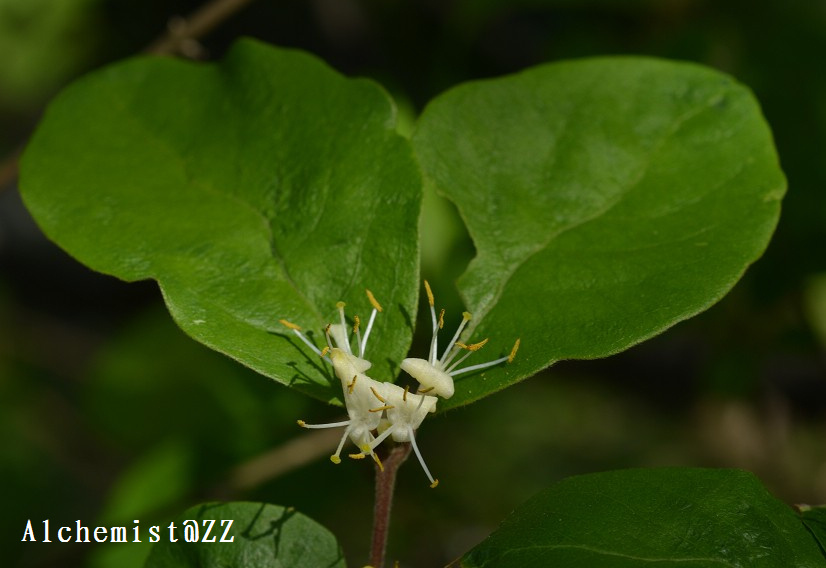- Scientific Name: Lonicera modesta Rehder
- Ref: C.S.Sargent, Trees & Shrubs 2:49. 1907
- Synonym: Lonicera graebneri Rehder
- Chinese Common Name: 下江忍冬 xiàjiāng rěndōng
- Family: Caprifoliaceae
- Genus: Lonicera
- Distribution: Mixed forests, scrub; 500-1700 m. Anhui, ?Fujian, SE Gansu, W Henan, Hubei, Hunan, Jiangxi, S Shaanxi, Zhejiang.
- Photo: 04/27/2013
Shrubs, deciduous, to 2 m tall. Winter buds with ca. 5 pairs of outer acute, keeled scales; inner scales sometimes accrescent and enlarged. Branches, petioles, and peduncles densely pubescent or glabrous. Petiole 2-5 mm; leaf blade elliptic to oblong, broadly ovate, obovate, or rhombic, 2-8 × 1.5-6 cm, abaxially pubescent, glabrous or sparsely pubescent only on veins, adaxially glabrous or pubescent often only on midvein and lateral veins, base cuneate to rounded, margin ciliate, apex obtuse, mucronate, or slightly emarginate. Inflorescences axillary, paired flowers; peduncle 1-7 mm; bracts subulate, 2-3 mm, ciliate; bracteoles fused into a cupule, ca. 1/3 as long as ovaries, ciliate, with sparse glands. Neighboring 2 ovaries half to completely fused. Calyx lobes linear-lanceolate, 2-2.5 mm, ciliate, sometimes with sparse glands. Corolla bilabiate, white, base reddish, later yellow, 1-1.2 cm, outside sparsely pubescent or subglabrous; tube ca. 5 mm, shallowly gibbous at base, inside densely hairy; upper lip 4-lobed, lobes 2-3 mm; lower lip recurved. Stamens and style exserted from corolla tube; filaments glabrous or hairy at base. Style hairy throughout. Berries turning from orange-red to red, 7-8 mm in diam.; seeds 1-4, yellowish brown, slightly compressed, ovoid or oblong, 4-6 mm, minutely granular-raised and coarse. Fl. May-Jun, fr. Jul-Oct. (Flora of China)
